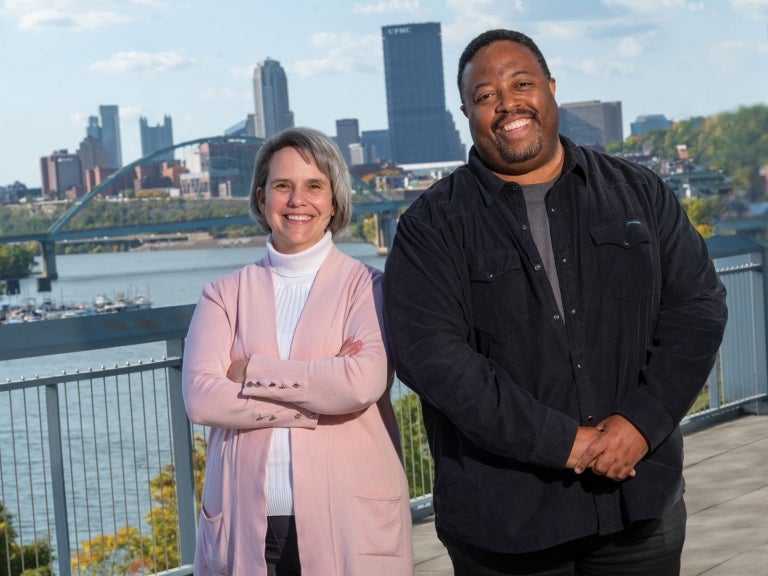
Elizabeth Skidmore and Gregory Hicks (PhD ’02)
For many decades, the medical community has been wrestling with ways to eliminate health inequities across different segments of our society by diversifying the health care workforce.
As far back as the 1960s, in the midst of the community health and civil rights movement, there was a call for responsiveness to cultural differences in health attitudes, beliefs, behavior and language.
In 2003, the Institute of Medicine published “Unequal Treatment: Confronting Racial and Ethnic Disparities in Health Care.” The study highlights the potential of cross-cultural education to improve provider-patient communication and offers a detailed look at how to integrate cross-cultural learning within the health professions.
While cultural sensitivity and cross-cultural curricula are helpful, there remains a need to increase the number of clinicians from underrepresented groups.
Progress has been slow, but there has been a gradual increase.
The same has not been true for the number of rehabilitation research scientists.
Until now.
TiDe Brings Sea Change in Training Rehabilitation Researchers
Elizabeth Skidmore, associate dean for Research, SHRS, and professor, Department of Occupational Therapy (OT), and alumnus Gregory Hicks (PhD ’02), distinguished professor, Department of Physical Therapy (PT), and associate vice president for Clinical and Translational Research, University of Delaware, are leading a national effort unlike any other.

Gregory Hicks, Elizabeth Skidmore and Laura Waterstram
Through a grant from the National Institutes of Health (NIH), the Training in Diversity education program (TiDe) will train current clinician scientists in best practices so they can develop pathways for future researchers, create communities of diverse scientists, and reduce the barriers to diversity and inclusion in rehabilitation research.
According to Skidmore, TiDe has the potential to revolutionize the field. It will transform the NIH research culture to one that invests in future generations of underrepresented clinical scientists who will enrich the breadth, depth and impact of rehabilitation research.
“We need clinician scientists with a breadth of expertise in clinical theories, methods and practices, as well as a breadth of personal perspectives and life experiences, if we are to lead research that truly informs our practice,” explains Skidmore. She adds that it is vital that future rehabilitation scientists reflect the demographics, needs and perspectives of the nation’s population more accurately.
“TiDe will help us ensure that the next generation of scientists will represent this breadth of perspectives so that we may conduct research that informs the delivery of the right rehabilitation care to the right person at the right time.”
“During our initial conversations about TiDe, Dr. Skidmore and I both realized that if we do this right, we have the opportunity to make a huge impact on our professions,” said Hicks.
“When you explore the scientific literature on diversity, it is clear that diversity of thought, opinion and experience on a team consistently leads to better outcomes,” adds Hicks. “That’s exactly what we want for rehabilitation science.”

TiDe is the first research education program solely devoted to creating a sustainable community of diverse clinician scientists with the capacity to advance rehabilitation research.
Skidmore and Hicks are working in close collaboration with Susan Giancola, University of Delaware; Simone Gill, Boston University; Marcie Harris-Hayes and Kerri Morgan, Washington University in St. Louis; and Natalie Leland, University of Pittsburgh, as well as several additional faculty nationwide with a broad range of rehabilitation research expertise. Laura Waterstram, also with the University of Pittsburgh Department of Occupational Therapy, works as TiDe’s Program Administrator. Collectively, the leadership team represents three of the top five Occupational Therapy and the top three Physical Therapy programs in the country, as ranked by U.S. News & World Report.
The team will leverage their knowledge and strengths in OT and PT intervention and implementation research, and then expand the program to include additional rehabilitation disciplines.
“We recognize we need to reach young people at earlier stages in their career trajectory to expand the potential pool of candidates for these research training positions,” says Skidmore. “Graduate professional programs are currently the richest environment to recruit and train future rehabilitation clinician scientists.”
Over the course of two years, TiDe will match clinician scientists who are committed to training and mentoring students with underrepresented graduate professional trainees who demonstrate strong potential for success in rehabilitation research.
Each team will complete four phases—connect, select, train and sustain—that will create a community of diverse clinician scientists with the potential to “turn the tide” in rehabilitation science research.
The Need is Great
Skidmore says studies show that the top 10 of the 150 most costly health conditions can be managed with early detection and effective delivery of rehabilitation as an alternative to high-cost, low-impact medical interventions.
Both OT and PT professions have been moving in this direction over the past several decades, in large part because of the substantial, evidence-based research that has supported these disciplines.
“If we are able to reshape the rehabilitation science workforce and promote high-quality research that addresses health inequities through our TiDe program, we will put our OT and PT practitioners in a position to ensure that all of our patients are receiving optimal care, regardless of their demographic profile,” concludes Hicks.
----------------------
This article was featured in the Fall 2022 edition of FACETS.
---
Published December 19, 2022
